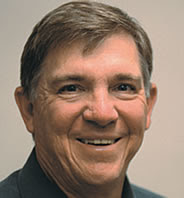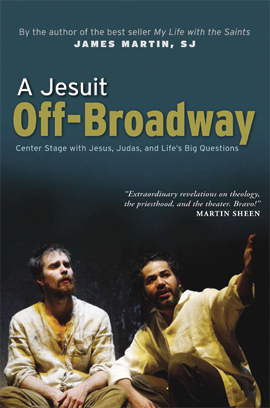
"Sacred Feasts
From a Monastery Kitchen,"
by Brother Victor-Antoine
d'Avila-Latourrette
In the grocery produce area, without looking at the signage, can you spot the leeks?
Although I'd heard of leeks, I'd never known what a leek was -- or even what a leek looked like -- until a recipe in "Sacred Feasts From a Monastery kitchen" called for them.
Our neighborhood supermarket had a small stack of the onion-family root veggie -- imagine a tall onion about half the height of a softball bat.
They helped to make the most delicious soup, if I do say so myself.
Leeks from the garden of Our lady of the Resurrection Monastery in upstate New York find their way into a number of the dishes that Brother Victor-Antoine d'Avila-Latourrette shares in his latest collection of recipes and reflections.
With the feasts of the church and the saints' days as his structure, Brother Victor-Antoine cooks his way through the calendar, walking us through his rationale for preparing specific dishes. Easter and Christmas get the attention they deserve, of course but not forgotten are the small feasts that require the serving of St. Bernadette's Creamy Rice Pudding, for example, St. James Egg and Avocado Salad and St. Nicholas Bread.
Reviewing books for a blog on www.TheCatholicSpirit.com has never led me to cooking before. But how do you review a cookbook without testing a few recipes?
Soup for a saint
The St. Joseph Leek, Potato and Squash Soup intrigued me. For the monks, the March 19 Feast of St. Joseph is cause for a more festive meal than usual fare, coming during Lent as it does, and Brother Victor-Antoine pulled a number of veggies from the monastery cellar to fashion a soup he named in honor of the saint of the day.
That's why I had to buy the leeks.
The recipe also called for onion, garlic, potatoes, and acorn squash, but truth be told I skipped the squash; never could warm up to the taste.
Thanks to watching my mom and wife, I make a pretty decent vegetable beef soup when the spirit moves me, but I've never made a soup in which you put the cooked ingredients into a food processor or blender to puree.
The result was an amazingly flavorful, tasty soup.
My wife suggested "doctoring" it with a bit of chicken bouillon, and that made it just about perfect.
Simple-to-follow recipes
I figured I'd better try a dessert recipe, too, and thanks to the prolific apple tree in our yard I didn't have to shop for the filling for the "Apple Dumplings German Style" that Brother Victor-Antoine prepared for late October.
If I acknowledge that I downed five of the six apple-filled pastries, will that be evidence enough of how good they were? And why we just joined a gym?
The recipe was so simple even a journalist couldn't screw it up.
That's the case with most of the dishes in this 208-page hardcover work from Liguori Publications.
Some ingredients may be new to less-veteran cooks, but the step-by-step directions are thorough, clear and specific, often taking the time to explain the required technique known to good chefs but not by us some-time cooks.
You should know that the monastery diet is primarily vegetarian. Just a few of the dishes offer adding meat as an option. The monks east out of their garden and buy locally grown produce from the farms nearby. And hearty soups are a mainstay of the monastery diet.
But the French background and training of Brother Victor-Antoine pope out in hi use of wine in many of the dishes he's gathered for the feasts of the church year.
More than a cookbook
What makes "Sacred Feasts" valuable is that as good a chef as Brother is, he's also a wonderful teacher about both Catholic traditions and Catholic beliefs.
Remember ever observing Candlemas?
Today the Feb. 2 feast is called the Presentation of the Lord, but Brother takes advantage of the day's former title to wax prosaic (pun intended!) on the central place of candles in the liturgy, reminding how the candle symbolizes Christ's presence in our midst.
Throughout "Sacred Feasts" there are these little catechizing moments, simple words of wisdom to remember and to share, reflections on the faith to nourish the conversation around our own dinner tables.
He explains that we fast during Lent primarily to enable us to better contemplate the suffering of Christs and actually participate and share in that immense sacrifice Jesus made to atone for our sin, but also to help us remember the pain and need of others, especially the poor and suffering.
Reading cooks will find out why we bless our food before meals, learn to see the maturation of the fruit and vegetables as seasonal blessings from the Lord, and absorb the legacy of the saints in the church calendar.
Lovely woodcuts of monastery life and interesting quotes in the book's margins spice up the pages, too.
Together with flavorful recipes, sprinkles of faith formation and Catholic identity building, "Sacred Feasts From a Monastery Kitchen" is a filing package, so much more than a cookbook. -- bz






